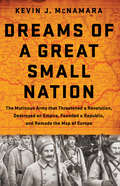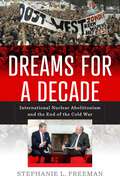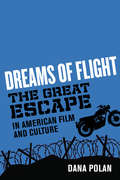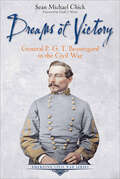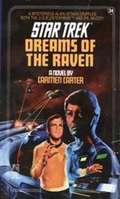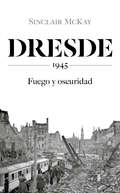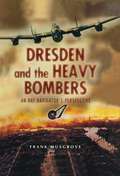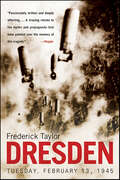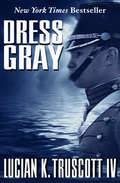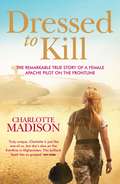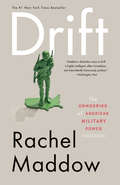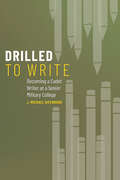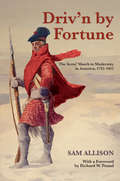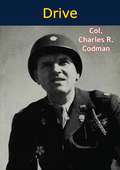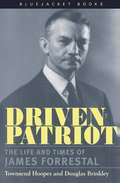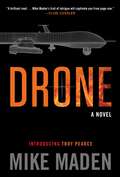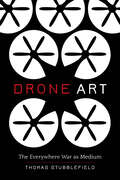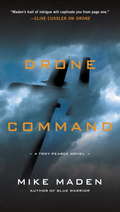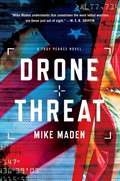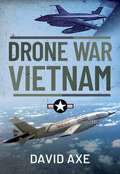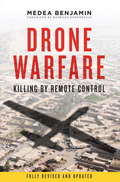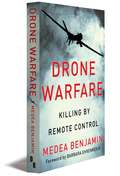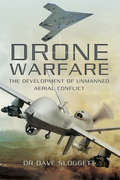- Table View
- List View
Dreams Of A Great Small Nation: The Mutinous Army That Threatened A Revolution, Destroyed An Empire, Founded A Republic, And Remade The Map Of Europe
by Kevin J. Mcnamara"The pages of history recall scarcely any parallel episode at once so romantic in character and so extensive in scale. ” --Winston S. Churchill In 1917, two empires that had dominated much of Europe and Asia teetered on the edge of the abyss, exhausted by the ruinous cost in blood and treasure of the First World War. As Imperial Russia and Habsburg-ruled Austria-Hungary began to succumb, a small group of Czech and Slovak combat veterans stranded in Siberia saw an opportunity to realize their long-held dream of independence. While their plan was audacious and complex, and involved moving their 50,000-strong army by land and sea across three-quarters of the earth’s expanse, their commitment to fight for the Allies on the Western Front riveted the attention of Allied London, Paris, and Washington. On their journey across Siberia, a brawl erupted at a remote Trans-Siberian rail station that sparked a wholesale rebellion. The marauding Czecho-Slovak Legion seized control of the Trans-Siberian Railroad, and with it Siberia. In the end, this small band of POWs and deserters, whose strength was seen by Leon Trotsky as the chief threat to Soviet rule, helped destroy the Austro-Hungarian Empire and found Czecho-Slovakia. British prime minister David Lloyd George called their adventure "one of the greatest epics of history,” and former US president Teddy Roosevelt declared that their accomplishments were "unparalleled, so far as I know, in ancient or modern warfare. ”
Dreams for a Decade: International Nuclear Abolitionism and the End of the Cold War (Power, Politics, and the World)
by Stephanie L. FreemanDuring the 1980s, millions of ordinary individuals around the world mobilized in support of nuclear disarmament. Although U.S. President Ronald Reagan and Soviet General Secretary Mikhail Gorbachev were not part of these grassroots movements, they too wanted to eliminate nuclear weapons. Nuclear abolitionism was a diverse and global phenomenon.In Dreams for a Decade, Stephanie L. Freeman draws on newly declassified material from multiple continents to examine nuclear abolitionists’ influence on the trajectory of the Cold War’s last decade. Freeman reveals that nuclear abolitionism played a significant yet unappreciated role in ending the Cold War. Grassroots and government nuclear abolitionists shifted U.S. and Soviet nuclear arms control paradigms from arms limitation to arms reduction. This paved the way for the reversal of the U.S.-Soviet nuclear arms race, which began with the landmark 1987 Intermediate-Range Nuclear Forces Treaty. European peace activists also influenced Gorbachev’s “common European home” initiative and support for freedom of choice in Europe, which prevented the Soviet leader from intervening to stop the 1989 East European revolutions. These revolutions ripped the fabric of the Iron Curtain, which had divided Europe for more than four decades.Despite their inability to eliminate nuclear weapons, grassroots and government nuclear abolitionists deserve credit for playing a pivotal role in the Cold War’s endgame. They also provide a model for enacting dramatic, positive change in a peaceful manner.
Dreams of Flight: "The Great Escape" in American Film and Culture
by Dana PolanThe first full-length study of the iconic 1960s film The Great Escape and its place in Hollywood and American history.Escaped POW Virgil Hilts (Steve McQueen) on a stolen motorcycle jumps an imposing barbed wire fence—caught on film, the act and its aftermath have become an unforgettable symbol of triumph as well as defeat for 1960s America. Combining production and reception history with close reading, Dreams of Flight offers the first full-length study of The Great Escape, the classic film based on a true story of Allied prisoners who hatched an audacious plan to divert and thwart the Wehrmacht and escape into the nearby countryside. Through breezy prose and pithy analysis, Dana Polan centers The Great Escape within American cultural and intellectual history, drawing a vivid picture of the country in the 1960s. We see a nation grappling with its own military history, a society undergoing significant shifts in its culture and identity, and a film industry in transition from Old Hollywood's big-budget runaway studio films to the slow interior cinema of New Hollywood. Dreams of Flight combines this context with fan anecdotes and a close study of filmic style to bring readers into the film and trace its wide-reaching influence. Polan examines the production history, including prior adaptations in radio and television of celebrated author Paul Brickhill's original nonfiction book about the escape, and he compares the cinematic fiction to the real events of the escape in 1944. Dreams of Flight also traces the afterlife of The Great Escape in the many subsequent movies, TV commercials, and cartoons that reference it, whether reverentially or with humor.
Dreams of Victory: General P. G. T. Beauregard in the Civil War
by Sean Michael ChickFew Civil War generals attracted as much debate and controversy as Pierre Gustav Toutant Beauregard. P. G. T. combined brilliance and charisma with arrogance and histrionics. He was a Catholic Creole in a society dominated by white Protestants, which made him appear exotic next to the likes of Albert Sidney Johnston and Robert E. Lee. He was reviled by Jefferson Davis and often mocked by Mary Chesnut in her diary. Yet, he was popular with his soldiers and subordinates. Outside of Lee, he was the South’s most consistently successful commander, winning at Bull Run, defending Charleston in 1863, and defeating Benjamin Butler at Bermuda Hundred and Ulysses Grant and George Meade at Petersburg. Yet, he lived his life in the shadow of his one major defeat: Shiloh. Beauregard’s career before and after the war was no less tumultuous than his Civil War record. He was born among the Creole elite of Louisiana, but rejected the life of a planter in favor of the military, inspired by tales of Napoléon. He was considered a shining light of the antebellum army and performed superbly in the Mexican-American War. Yet, he complained about a lack of promotion and made a frustrating stab at being mayor of New Orleans in 1858. After the war, he was a successful railroad executive and took a stand against racism, violence, and corruption during the Reconstruction. Yet, he was ousted from both railroads he oversaw and his foray into Reconstruction politics came to naught. Although he provided for his family and left them a hefty sum after his death, the money was mostly gained by working for the corrupt Louisiana Lottery. In Dreams of Victory: General P. G. T. Beauregard in the Civil War, Sean Michael Chick explores a life of contradictions and dreams unrealized—the first real hero of the Confederacy who sometimes proved to be his own worst enemy.
Dreams of the Raven (Star Trek: The Original Series #34)
by Carter CarmenDreams Of The Raven A merchant ship's frantic S.O.S sends the U.S.S. Enterprise speeding to the rescue! But the starships mission of mercy soon becomes a desperate struggle for survival against a nightmarish enemy Captain Kirk can neither identify nor understand, an enemy he must defeat without the aid of one of his most trusted officers. For the Leonard McCoy Kirk knew is gone. In his place stands a stranger -- a man with no memory of his Starfleet career, his family, his friends... or the one thing James T. Kirk needs most of all. His dreams.
Dresde: 1945. Fuego y oscuridad
by Sinclair McKayLa historia de uno de los bombardeos más famosos de la historia, contada a partir de las voces de quienes los sufrieron, en su 75 aniversario. En los últimos días de la Segunda Guerra Mundial, los aliados destruyeron la llamada «Florencia del Elba»: en una sola noche sobrevolaron Dresde 796 bombarderos, murieron veinticinco mil personas, muchas más quedarían profundamente traumatizadas y una magnífica ciudad quedó en ruinas. Sinclair McKay ofrece el relato minuto a minuto de aquella noche fatídica desde la perspectiva de sus habitantes. Nos muestra desde qué se proyectaba en las salas de cine hasta la porcelana que había en las repisas, y nos cuenta las muchas historias personales, nunca antes contadas, de habitantes, refugiados, trabajadores, niños, pilotos y prisioneros. McKay da vida a la ciudad antes y después de la tragedia, al tiempo que explora el rico contexto cultural. Impecablemente investigado y profundamente conmovedor, Dresde se basa en nuevas fuentes y transmite la textura de la vida en una población diezmada. El bombardeo suele invocarse como paradigma de las crueldades ilimitadas de la guerra, y la distancia que otorga el paso del tiempo permite hoy abordar este tema con una mirada mucho más clara y desprejuiciada, poniendo el foco en las vidas que perdió o trató de reconstruir la gente de a pie. Nunca antes se había retratado el alcance de este ataque aéreo sobre la población civil de un modo tan emotivo, polifónico y profundamente humano como en esta obra maestra de la historia narrativa. La crítica ha dicho...«La línea de sombra está en el punto de vista: el de quienes vivieron la catástrofe en tierra y los que lo hicieron en el aire, ese abismo que separa a quienes tomaron decisiones de los que no tuvieron elección.»Karina Sainz Borgo, Vozpópuli
Dresden and the Heavy Bombers: An RAF Navigator's Perspective
by Frank MusgroveThis is the story of a young man's entry into the war in 1941 and culminates in his flying on the bombing raid to Dresden in February 1945. This is not a gung-ho account of flying with Bomber Command but neither is it a breast-beating avowal of guilt. These memoirs take the form of a basic narrative of the author's RAF career and pay particular attention to fear, morale and, as the author explains, the myth of leadership. Several raids are described in detail and illustrate the variety of experience, problems and dangers involved in such hazardous warfare. So, nearly 60 years after his dramatic experiences, how does he view the bombing of factories and cities and the inevitable grave moral issues that have slowly and insidiously crept up on him ? The answer will surprise many younger and older readers.
Dresden: Tuesday, February 13, 1945
by Frederick TaylorPublished to coincide with the bombing, this dramatic and controversial account completely re-examines the Allied attack on DresdenFor decades it has been assumed that the Allied bombing of Dresden was militarily unjustifiable, an act of rage and retribution for Germany’s ceaseless bombing of London and other parts of England. Now, Frederick Taylor’s groundbreaking research offers a completely new examination of the facts, and reveals that Dresden was a highly-militarized city actively involved in the production of military armaments and communications concealed beneath the cultural elegance for which the city was famous. Incorporating first-hand accounts, contemporaneous press material and memoirs, and never-before-seen government records, Taylor documents unequivocally the very real military threat Dresden posed, and thus altering forever our view of that attack.
Dress Gray
by Lucian K. Truscott IVThis New York Times–bestselling novel about a crime and cover-up at West Point offers &“a compelling portrait of the military academy&” (The New York Times). Ry Slaight is a young cadet at the United States Military Academy, walking punishment tours in May 1968, when he hears that the body of a plebe has been found floating in Lake Popolopen. Supposedly, it was an accident—but it&’s not long before Slaight learns details about the autopsy suggesting a much darker story. Slaight&’s personal quest to uncover the truth—and the authorities&’ efforts to keep it from him—will reveal both heroes and villains within the Long Gray Line in this &“frightening novel about &‘a secret cult headquartered on the Hudson behind a stone façade.&’ . . . The author mounts an attack on his alma mater with brilliance and fury&” (Newsday).
Dressed to Kill
by Charlotte MadisonMy fingers close around the trigger. I pause for a split second to think about the bullets I am about to spray across the ground. After today, I'll no longer be the new girl.'Captain Charlotte Madison is blonde, beautiful and flies Apache helicopters for a living. She has completed two tours of duty in Afghanistan and is currently fighting on the frontline in her third. DRESSED TO KILL shows us what life is like for a girl in a resolutely male-dominated environment. But she isn't just a woman in a man's world, she's a woman women aspire to be - glamorous as well as brave, and beating the men at their own game. Only a tiny percentage of people can multi-task to the extreme level the aircraft demands, and most airmen who try to qualify as an Apache pilot fail. Full of the exciting, adrenaline-filled action that has made other military memoirs so successful, DRESSED TO KILL is also unique. A highly intelligent and brilliant young woman, Charlotte is Britain's first female Apache pilot, and the first British female pilot to kill in an Apache. We have, quite simply, never seen the landscape of 21st-century frontline conflict from a perspective like hers. DRESSED TO KILL will appeal to anyone interested in current affairs, but it will also speak to a whole generation of young women who will relate to 27-year-old Charlotte in a way they never imagined possible.
Dressed to Kill
by Charlotte MadisonMy fingers close around the trigger. I pause for a split second to think about the bullets I am about to spray across the ground. After today, I'll no longer be the new girl.'Captain Charlotte Madison is blonde, beautiful and flies Apache helicopters for a living. She has completed two tours of duty in Afghanistan and is currently fighting on the frontline in her third. DRESSED TO KILL shows us what life is like for a girl in a resolutely male-dominated environment. But she isn't just a woman in a man's world, she's a woman women aspire to be - glamorous as well as brave, and beating the men at their own game. Only a tiny percentage of people can multi-task to the extreme level the aircraft demands, and most airmen who try to qualify as an Apache pilot fail. Full of the exciting, adrenaline-filled action that has made other military memoirs so successful, DRESSED TO KILL is also unique. A highly intelligent and brilliant young woman, Charlotte is Britain's first female Apache pilot, and the first British female pilot to kill in an Apache. We have, quite simply, never seen the landscape of 21st-century frontline conflict from a perspective like hers. DRESSED TO KILL will appeal to anyone interested in current affairs, but it will also speak to a whole generation of young women who will relate to 27-year-old Charlotte in a way they never imagined possible.
Drift
by Rachel MaddowThe #1 New York Times bestseller that charts America's dangerous drift into a state of perpetual war. "One of my favorite ideas is, never to keep an unnecessary soldier," Thomas Jefferson wrote in 1792. Neither Jefferson nor the other Founders could ever have envisioned the modern national security state, with its tens of thousands of "privateers"; its bloated Department of Homeland Security; its rusting nuclear weapons, ill-maintained and difficult to dismantle; and its strange fascination with an unproven counterinsurgency doctrine. Written with bracing wit and intelligence, Rachel Maddow's Drift argues that we've drifted away from America's original ideals and become a nation weirdly at peace with perpetual war, with all the financial and human costs that entails. To understand how we've arrived at such a dangerous place, Maddow takes us from the Vietnam War to today's war in Afghanistan, along the way exploring the disturbing rise of executive authority, the gradual outsourcing of our war-making capabilities to private companies, the plummeting percentage of American families whose children fight our constant wars for us, and even the changing fortunes of G.I. Joe. She offers up a fresh, unsparing appraisal of Reagan's radical presidency. Ultimately, she shows us just how much we stand to lose by allowing the priorities of the national security state to overpower our political discourse. Sensible yet provocative, dead serious yet seriously funny, Drift will reinvigorate a "loud and jangly" political debate about how, when, and where to apply America's strength and power--and who gets to make those decisions.From the Hardcover edition.
Drift: The Unmooring of American Military Power (Playaway Adult Nonfiction Ser.)
by Rachel MaddowThe #1 New York Times bestseller that charts America’s dangerous drift into a state of perpetual war. Written with bracing wit and intelligence, Rachel Maddow's Drift argues that we've drifted away from America's original ideals and become a nation weirdly at peace with perpetual war. To understand how we've arrived at such a dangerous place, Maddow takes us from the Vietnam War to today's war in Afghanistan, along the way exploring Reagan's radical presidency, the disturbing rise of executive authority, the gradual outsourcing of our war-making capabilities to private companies, the plummeting percentage of American families whose children fight our constant wars for us, and even the changing fortunes of G.I. Joe. Ultimately, she shows us just how much we stand to lose by allowing the scope of American military power to overpower our political discourse. Sensible yet provocative, dead serious yet seriously funny, Drift will reinvigorate a "loud and jangly" political debate about our vast and confounding national security state.
Drilled to Write: Becoming a Cadet Writer at a Senior Military College
by J. Michael RifenburgDrilled to Write offers a rich account of US Army cadets navigating the unique demands of Army writing at a senior military college. In this longitudinal case study, J. Michael Rifenburg follows one cadet, Logan Blackwell, for four years and traces how he conceptualizes Army writing and Army genres through immersion in military science classes, tactical exercises in the Appalachian Mountains, and specialized programs like Airborne School. Drawing from research on rhetorical genre studies, writing transfer, and materiality, Drilled to Write speaks to scholars in writing studies committed to capturing how students understand their own writing development. Collectively, these chapters articulate four ways Blackwell leveraged resources through ROTC to become a cadet writer at this military college. Each chapter is dedicated to one year of his undergraduate experience with focus on curricular writing for his business management major and military science classes as well as his extracurricular writing, like his Ballroom Dance Club bylaws and a three-thousand-word short story. In Drilled to Write, Rifenburg invites readers to see how cadets are positioned between civilian and military life—a curiously liminal space where they develop as writers. Using Army ROTC as an entry into genre theory and larger conversations about the role higher education plays in developing Army officers, he shows how writing students develop genre awareness and flexibility while forging a personal identity.
Driv'n by Fortune: The Scots' March to Modernity in America, 1745–1812
by Sam AllisonA provocative account of the 78th Fraser’s Highlanders and its crucial place in history. The remarkable story of the men of the 78th Fraser’s Highlanders moves from the 1745 Jacobite Rebellion in Scotland, through the Seven Years’ War and the American Revolution, to the War of 1812. Simon Fraser, chief of the Clan Fraser of Lovat, raised the 78th Highlanders, a regiment that played a major role in defeating the French on the Plains of Abraham. Driv’n by Fortune tackles the myths embedded in nationalistic history and in fictional accounts of these Highland soldier-settlers who brought the Scottish Enlightenment to North America. The impact of the 78th Fraser’s Highlanders, which extended far beyond Scotland and the Canada of their times, is finally being told.
Drive
by Col. Charles R. CodmanHaving fought with distinction (winning the Silver Star and the Croix de Guerre) in the First World War as a pilot, Charles Russell Codman retired back to civilian life believing that his fighting days were over. However he re-entered the army to fight on the side of Democracy once again, and before long his unique qualifications led him to being appointed as aide-de-camp to no lesser general than George S. Patton Jr. This book is the fascinating story of Codman's experiences as part of General Patton's staff from the sands of North Africa to eventual victory in Germany. A rare insight into the wartime career at the headquarters of America's finest fighting general of the Second World War."THIS book is compiled from letters written to my wife during thirty-three months of service (1942-1945) in the European theater of operations during World War II."At the end of the North African campaign, I was appointed A.D.C. to General George S. Patton, Jr., serving from then on as his senior aide-de-camp until after V-E Day and his return to the United States. While General Patton is naturally the central and dominating figure of this journal, the latter is in no sense an attempt at either biography or military analysis."--The Author
Driven Patriot
by Douglas Brinkley Townsend HoopesA biography of the brilliant, ambitious Forrestal whose career took him from the Wall Street to Washington.
Drone (A Troy Pearce Novel #1)
by Mike Maden"A brilliant read with astounding plot twists. . . Maden's trail of intrigue will captivate you from page one. " -CLIVE CUSSLER With a fascinating international cast of characters and nonstop action, Mike Maden’s Drone kicks off an explosive new thriller series exploring the inescapable consequences of drone warfare. Troy Pearce is the CEO of Pearce Systems, a private security firm that is the best in the world at drone technologies. A former CIA SOG operative, Pearce used his intelligence and combat skills to hunt down America’s sworn enemies in the War on Terror. But after a decade of clandestine special ops, Pearce opted out. Too many of his friends had been sacrificed on the altar of political expediency. Now Pearce and his team chose which battles he will take on by deploying his land, sea, and air drones with surgical precision. Pearce thinks he’s done with the U. S. government for good, until a pair of drug cartel hit men assault a group of American students on American soil. New U. S. president Margaret Meyers then secretly authorizes Pearce Systems to locate and destroy the killers sheltered in Mexico. Pearce and his team go to work, and they are soon thrust into a showdown with the hidden powers behind the El Paso attack-unleashing a host of unexpected repercussions. A Ph. D. , lecturer, and consultant on political science and international conflict, Mike Maden has crafted an intense, page-turning novel that is action-packed and frighteningly real-blurring the lines between fiction and the reality of a new stage in warfare. .
Drone Art: The Everywhere War as Medium
by Thomas StubblefieldWhat happens when a drone enters a gallery or appears on screen? What thresholds are crossed as this weapon of war occupies everyday visual culture? These questions have appeared with increasing regularity since the advent of the War on Terror, when drones began migrating into civilian platforms of film, photography, installation, sculpture, performance art, and theater. In this groundbreaking study, Thomas Stubblefield attempts not only to define the emerging genre of "drone art" but to outline its primary features, identify its historical lineages, and assess its political aspirations. Richly detailed and politically salient, this book is the first comprehensive analysis of the intersections between drones, art, technology, and power.
Drone Command
by Mike MadenTroy Pearce and his elite team of drone experts are called in when rising tensions between China and Japan threaten to dramatically change the geopolitical climate of the world. When China stakes a dubious claim in the hotly disputed waters of the East China Sea, the prime minister of Japan threatens to dispatch the country's naval assets and tear up its antiwar constitution unless the Americans forcefully intervene. The war-weary Americans are reluctant to confront the powerful Chinese navy directly, but if the Japanese provoke a military conflict with their historic enemy, treaty obligations would draw the United States into the fight. In order to deescalate the first foreign policy crisis of his administration, U.S. president Lane dispatches Troy Pearce and his team to Tokyo to defuse the situation. What they find is a quagmire of hawkish politicians, nationalistic fervor, special interests with their own hidden agendas, and possibly the greatest military threat that America has ever faced. In this treacherous atmosphere it will require all of Pearce's cunning--and his team's technological prowess--to separate the truth from misdirection, and prevent the world from plunging into war.From the Hardcover edition.
Drone Threat (A Troy Pearce Novel #4)
by Mike MadenTroy Pearce and his team of drone experts are called to action when ISIS launches a series of attacks on U.S. soil. On the eve of President Lane's historic Asian Security Summit, a hobby-store quadcopter lands on the White House lawn carrying a package and an ominous threat: Fly the enclosed black flag of ISIS over the White House by noon today or suffer the consequences. The threat further promises that every day the flag isn't flown a new attack will be launched, each deadlier than the first. President Lane refuses to comply with the outrageous demand, but the first drone attacks, sending a shudder through the U.S. economy. With few options available and even fewer clues, President Lane unleashes Troy Pearce and his Drone Command team to find and stop the untraceable source of the destabilizing attacks. But the terror mastermind proves more elusive and vindictive than any opponent Pearce has faced before . . . and if Pearce fails, the nation will suffer an unimaginable catastrophe on its soil or be forced into war.
Drone War Vietnam
by David AxeWhile the use of drones is now commonplace in modern warfare, it was in its infancy during the Vietnam War, not to mention revolutionary and top secret. Drones would play an important – and today largely unheralded – role in the bloody, two-decade US air war over Vietnam and surrounding countries in the 1960s and ’70s. Drone aircraft spotted targets for manned US bombers, jammed North Vietnamese radars and scattered propaganda leaflets, among other missions. This book explores that obscure chapter of history. DRONE WAR: VIETNAM is based on military records, official histories and published first-hand accounts from early drone operators, as well as on a close survey of existing scholarship on the topic. In their fledgling efforts to send robots instead of human beings on the most dangerous aerial missions, US operators in South-East Asia in the 1960s and ’70s wrote the first chapter in the continuing tale of autonomous warfare.
Drone Warfare
by Barbara Ehrenreich Medea BenjaminDrone Warfare is the first comprehensive analysis of one of the fastest growing--and most secretive--fronts in global conflict: the rise of robot warfare. In 2000, the Pentagon had fewer than fifty aerial drones; ten years later, it had a fleet of nearly 7,500, and the US Air Force now trains more drone "pilots" than bomber and fighter pilots combined. Drones are already a $5 billion business in the US alone. The human cost? Drone strikes have killed more than 200 children alone in Pakistan and Yemen.CODEPINK and Global Exchange cofounder Medea Benjamin provides the first extensive analysis of who is producing the drones, where they are being used, who controls these unmanned planes, and what are the legal and moral implications of their use. In vivid, readable style, this book also looks at what activists, lawyers, and scientists across the globe are doing to ground these weapons. Benjamin argues that the assassinations we are carrying out from the air will come back to haunt us when others start doing the same thing--to us.
Drone Warfare: Killing by Remote Control
by Barbara Ehrenreich Medea BenjaminWeeks after the 2002 American invasion of Afghanistan, Medea Benjamin visited that country. There, on the ground, talking with victims of the strikes, she learned the reality behind the "precision bombs" on which U. S. forces were becoming increasingly reliant. Now, with the use of drones escalating at a meteoric pace, Benjamin has written this book as a call to action: "It is meant to wake a sleeping public," she writes, "lulled into thinking that drones are good, that targeted killings are making us safer. " Drone Warfare is a comprehensive look at the growing menace of robotic warfare, with an extensive analysis of who is producing the drones, where they are being used, who "pilots" these unmanned planes, who are the victims and what are the legal and moral implications. In vivid, readable style, the book also looks at what activists, lawyers and scientists are doing to ground the drones, and ways to move forward. In reality, writes Benjamin, the assassinations we are carrying out via drones will come back to haunt us when others start doing the same thing--to us.
Drone Warfare: The Development of Unmanned Aerial Conflict
by Dr. Dave SloggettThe Development of Unmanned Aerial Conflict will examine the development and use of aerial drones, a topical subject that has not been written on to date.An unmanned aerial vehicle, commonly known as a drone, is an aircraft without a human pilot on board. Its flight is either controlled autonomously by computers in the vehicle, or under the remote control of a navigator or pilot on the ground or in another vehicle.Blending history with current and recent operations, Dr Sloggett will set out to put the record straight. In some quarters of the press drones get a bad press and there has been much controversy over their deployment, some of which is not deserved.The book reveals the history of unmanned aircraft, their recent development and why they have emerged onto the scene. Why did the US, for example, really invest highly in drone technology? When did all that start? What barriers had to be overcome? What was there before drones arrived?The book also analyses their operations in Iraq in Gulf War Two and more recently Afghanistan. What roles did drones play? Where they successful? What new developments emerged during operations? Did they save lives? Further to this is a detailed look at case studies where they have been used trying to remove some of the incorrect reporting – putting the record straight based on evidence. How many have been shot down and where?The book then looks at strategic uses of drones at present: Iran is being monitored; they are already in action over parts of Africa; what are other countries doing – China, Iran? Turkey?The RAF's use of drones, their deployment and operations is considered along with important questions such as where this goes for the future. What are the issues? Will all air forces be drone based in the future? What other applications may arise in the civilian market?
